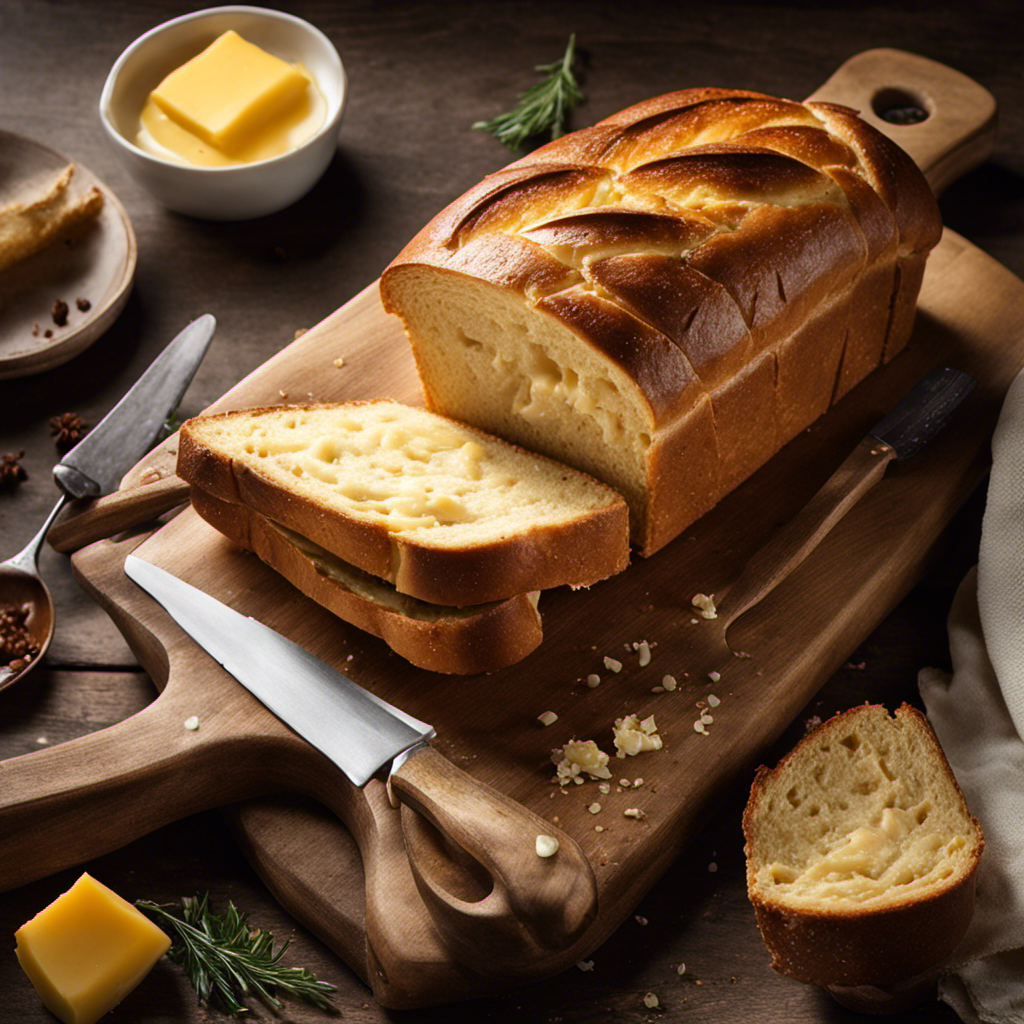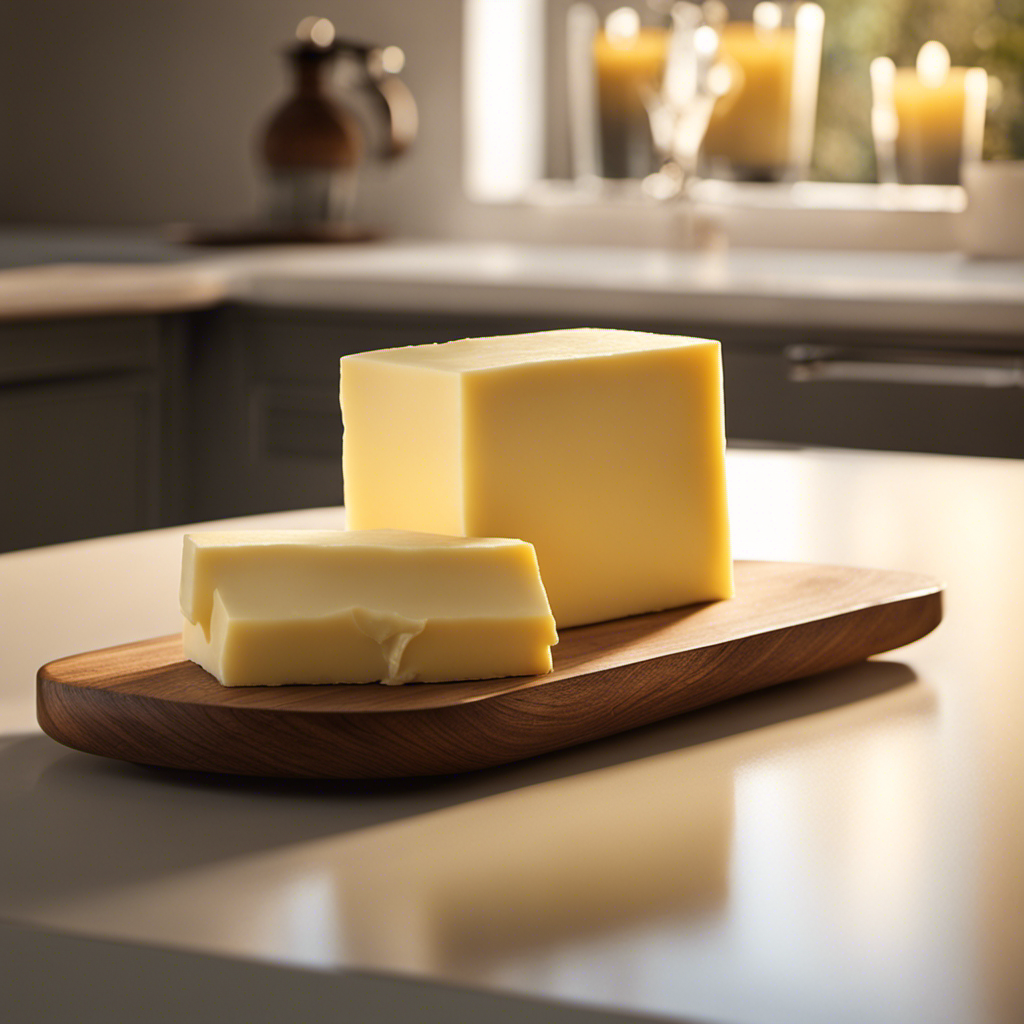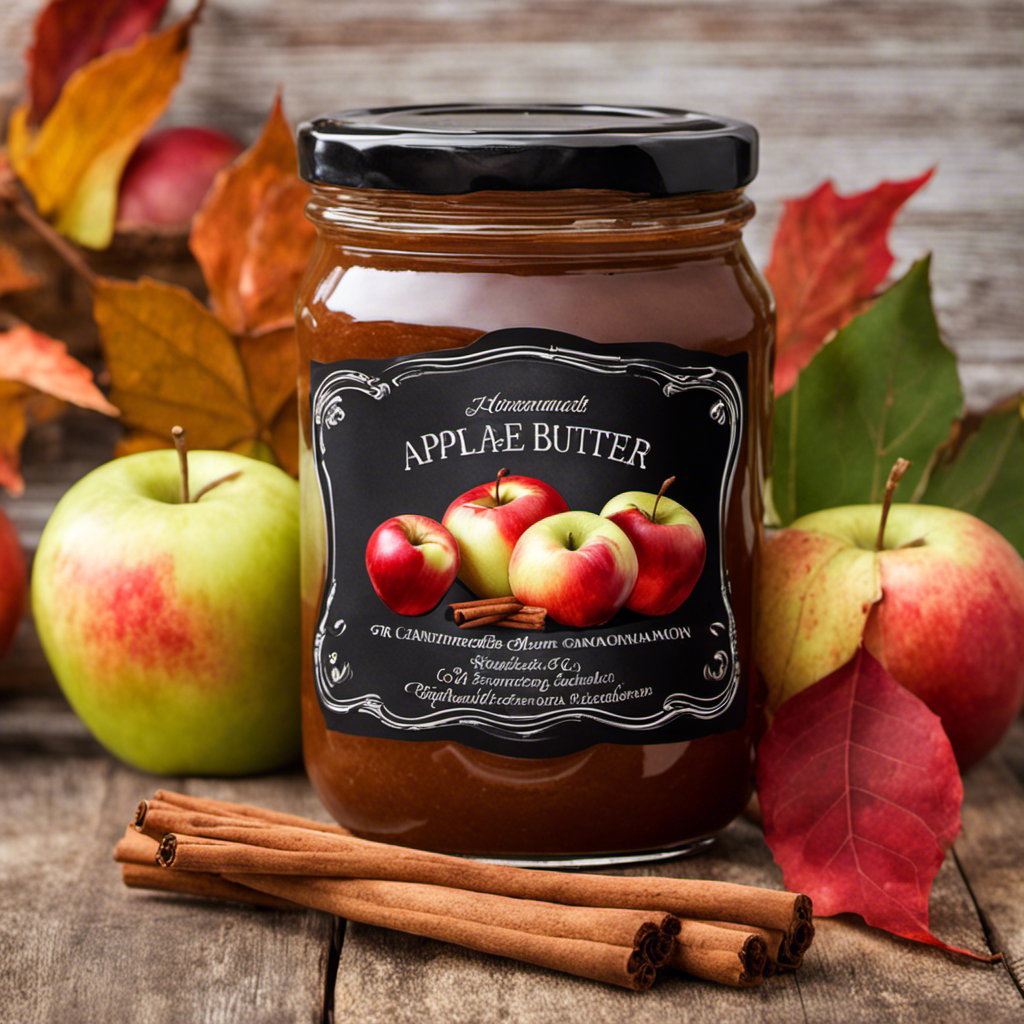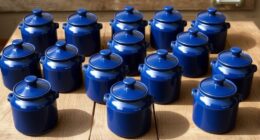I have a craving for sweets, and there is nothing quite like the rich and creamy delight of buttercream frosting.
But how long can we savor this delectable treat before it goes bad?
In this article, we’ll explore the shelf life of butter cream frosting and the factors that can affect its freshness.
Armed with this knowledge, you’ll be able to enjoy your favorite desserts with confidence, knowing just how long your butter cream frosting will stay good.
Key Takeaways
- Butter cream frosting typically has a shelf life of about one week.
- Proper storage in an airtight container in the refrigerator is recommended.
- Freezing can extend the shelf life of butter cream frosting to up to three months.
- Pay attention to signs of spoilage such as texture changes, off-smell, or mold growth.
Shelf Life of Butter Cream Frosting
You should know that butter cream frosting typically has a shelf life of about one week. It is important to store it properly to ensure its freshness and quality.
The best way to store butter cream frosting is by keeping it in an airtight container in the refrigerator. This will help to prevent any spoilage or bacterial growth. It is also recommended to keep the frosting away from strong odors, as it can easily absorb them.
If you need to store the frosting for a longer period of time, you can freeze it. Simply place it in a freezer-safe container and store it in the freezer for up to three months. When you are ready to use it, thaw it in the refrigerator overnight and give it a good stir before using.
Storage Guidelines for Butter Cream Frosting
Storing butter cream frosting properly ensures its freshness for a longer period.
To maximize the shelf life of your frosting, it is important to follow some key storage tips.
Firstly, ensure that the frosting is completely cooled before storing it. This will prevent condensation and maintain its texture.
Secondly, use an airtight container to store the frosting. This will help to keep out moisture and prevent it from absorbing any odors in the refrigerator.
Lastly, store the frosting in the refrigerator rather than at room temperature. The cold temperature will slow down the growth of bacteria and preserve its quality.
Factors Affecting the Freshness of Butter Cream Frosting
When it comes to the freshness of butter cream frosting, there are several key factors to consider.
Firstly, the impact of storage temperature cannot be underestimated. The temperature at which the frosting is stored can greatly affect its shelf life and overall quality.
Additionally, determining the shelf life of butter cream frosting involves considering various determinants, such as ingredients used, preservatives employed, and the overall hygiene practices followed during its preparation and storage.
Therefore, it is crucial to take into account these hygiene considerations to ensure the safety and longevity of the frosting.
Storage Temperature Impact
To keep buttercream frosting fresh, it’s important to store it at the proper temperature. The storage temperature has a significant impact on the taste and overall quality of the frosting. When stored at the right temperature, the frosting maintains its texture and flavor for a longer period of time.
According to research, buttercream frosting should be stored in a cool environment, ideally between 35°F and 40°F (1.7°C to 4.4°C). This helps prevent the frosting from melting or becoming too soft, which can affect its taste and appearance. By maintaining the proper storage temperature, you can ensure that your buttercream frosting stays fresh and delicious for as long as possible.
Now, let’s explore the other factors that determine the shelf life of buttercream frosting.
Shelf Life Determinants
The temperature at which buttercream frosting is stored significantly affects its shelf life and quality. Proper storage methods and preservation techniques can help extend the freshness of the frosting.
When stored at room temperature, buttercream frosting can last for about 2 to 3 days. However, if you refrigerate the frosting, it can last up to 1 to 2 weeks. Freezing the frosting can further prolong its shelf life, up to 3 to 4 months.
To ensure the best quality, it is recommended to store buttercream frosting in airtight containers or tightly wrapped with plastic wrap. It is important to note that when thawing frozen frosting, it should be done slowly in the refrigerator to prevent condensation and maintain the desired consistency.
Hygiene Considerations Crucial
When it comes to food safety, one crucial consideration is the expiration date. The expiration date serves as a guide for consumers to determine how long a product can be consumed safely. In the case of buttercream frosting, it is important to pay attention to the expiration date to ensure its freshness and quality.
Here are some key points to consider:
-
Proper storage: Store buttercream frosting in an airtight container in the refrigerator to extend its shelf life.
-
Visual inspection: Check the frosting for any signs of spoilage, such as mold or off-putting odors.
-
Taste test: If the frosting tastes sour or has an unusual flavor, it may have gone bad.
How to Tell If Butter Cream Frosting Has Gone Bad
When it comes to frosting, it’s important to be able to recognize the signs of spoilage. There are a few key indicators to look out for, such as a change in texture, off-smell, or mold growth.
Proper storage is also crucial in maintaining the freshness of frosting, and it’s recommended to keep it tightly sealed in the refrigerator.
Additionally, the shelf life of frosting can vary depending on the type and ingredients used, so it’s essential to check the expiration date or follow the manufacturer’s guidelines for best results.
Signs of Spoiled Frosting
You’ll want to look out for any unusual smells or mold on your butter cream frosting to determine if it has spoiled. To prevent frosting spoilage, it’s important to avoid these common mistakes in frosting storage:
-
Leaving it at room temperature for too long: Butter cream frosting should be refrigerated to keep it fresh and prevent bacterial growth.
-
Not using an airtight container: Exposure to air can cause the frosting to dry out and become susceptible to spoilage.
-
Storing it near strong odors: Frosting tends to absorb strong smells, so it’s important to store it away from pungent foods such as onions or garlic.
Storage Tips for Frosting
To keep your frosting fresh, make sure to store it in an airtight container. This will prevent air and moisture from entering, which can cause the frosting to dry out or absorb odors from the fridge. If stored properly, butter cream frosting can last for about 1-2 weeks in the refrigerator. However, if you have leftover frosting that you don’t want to go to waste, there are alternative uses for it. You can use it as a filling for cakes, cookies, or even cupcakes. It can also be used as a topping for ice cream or pancakes. Get creative and experiment with different flavors and combinations. Don’t let your leftover frosting go to waste, repurpose it and enjoy its deliciousness in new ways.
| Butter Cream Frosting Alternatives | Creative Uses for Leftover Frosting |
|---|---|
| Cream Cheese Frosting | Filling for cakes and cookies |
| Whipped Cream Frosting | Topping for ice cream |
| Ganache Frosting | Filling for cupcakes |
| Marshmallow Frosting | Topping for pancakes |
| Nutella Frosting | Filling for pastries |
Shelf Life of Frosting
If stored properly, your frosting can stay fresh for about 1-2 weeks in the refrigerator. It is important to follow proper storage techniques to maximize the shelf life of your frosting.
Here are some tips to ensure your frosting stays fresh for as long as possible:
-
Keep it in an airtight container: Using a container with a tight-fitting lid will help prevent air exposure and keep the frosting from drying out.
-
Store it at the right temperature: Refrigerating your frosting will help slow down bacterial growth and extend its shelf life.
-
Avoid cross-contamination: Make sure to use clean utensils every time you scoop out frosting to prevent introducing bacteria that could spoil it.
Extending the Lifespan of Butter Cream Frosting
One way to extend the lifespan of butter cream frosting is by storing it in an airtight container. This method helps to preserve the quality and freshness of the frosting for a longer period of time.
By sealing the frosting in an airtight container, it prevents air and moisture from entering, which can lead to spoilage and degradation in taste and texture. The airtight container acts as a barrier, keeping the frosting protected from external factors that could potentially shorten its shelf life.
It is important to ensure that the container is tightly sealed to maintain the freshness of the frosting. Additionally, storing the frosting in the refrigerator can further extend its lifespan by providing a cooler environment that helps to slow down the growth of bacteria and maintain its quality.
Tips for Properly Storing Butter Cream Frosting
Now that we know how to extend the lifespan of buttercream frosting, let’s talk about some tips for properly storing it.
One option for storing frosting is to place it in the freezer. Freezing buttercream can help preserve its freshness and prevent it from spoiling. However, it’s important to follow these tips to ensure the best results:
- Use an airtight container or freezer bag to prevent freezer burn.
- Label the container with the date to keep track of freshness.
- Thaw the frosting in the refrigerator overnight before using it. This prevents the frosting from melting too quickly and maintains its texture.
Frequently Asked Questions
Can I Freeze Buttercream Frosting?
Yes, you can freeze buttercream frosting. It’s a convenient option if you have leftover frosting or want to make it ahead of time. Alternatively, you can explore other frosting options such as cream cheese or ganache.
Can I Use Expired Buttercream Frosting?
Using expired buttercream frosting can pose health risks. The expiration date indicates when the frosting may no longer be safe to consume. It’s best to discard expired frosting to avoid potential foodborne illnesses.
Can I Leave Buttercream Frosting at Room Temperature?
Leaving buttercream frosting at room temperature can lead to bacterial growth and spoilage. It’s best to store it in the refrigerator to extend its shelf life. Follow proper food safety guidelines to keep it fresh.
Can I Store Buttercream Frosting in a Plastic Container?
Yes, you can store buttercream frosting in a plastic container as an alternative to other storage options. It helps keep the frosting fresh and prevents it from drying out.
Can I Refrigerate Buttercream Frosting for Longer Shelf Life?
Sure, you can refrigerate buttercream frosting to extend its shelf life. It helps preserve the texture and freshness. Just make sure to store it in an airtight container. Enjoy your buttercream goodness for longer!
Conclusion
In conclusion, it seems that butter cream frosting has a shelf life that rivals the age of the pyramids. With proper storage and a little bit of luck, this delectable concoction can last for weeks, if not months.
However, it is important to keep in mind that the freshness of the frosting can be affected by various factors, such as temperature and exposure to air. So, if you find yourself with a tub of butter cream frosting that has seen better days, don’t fret! Just follow the aforementioned guidelines and your frosting will be as good as new.
Happy frosting!










